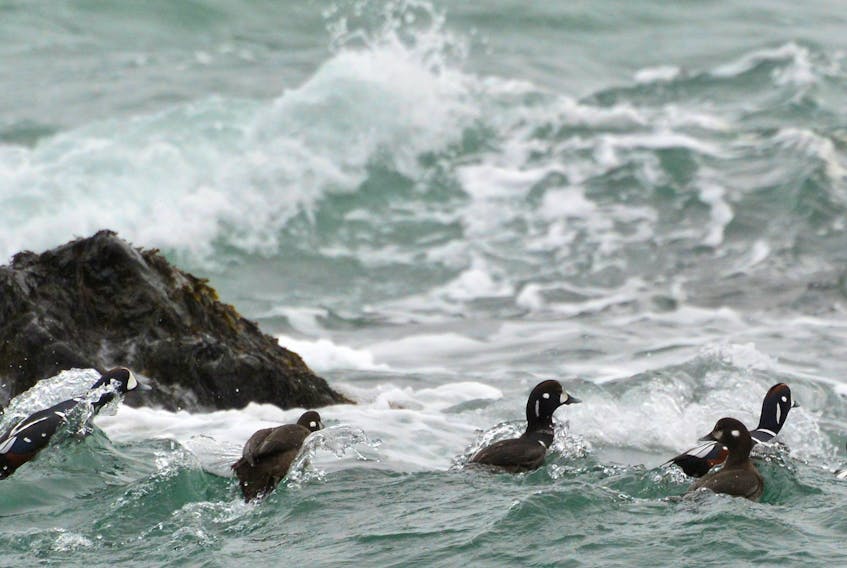The annual bird count is a North American tradition going back nearly 100 years. Before then people would certainly count birds, but then they’d shoot them.
Today the guns are swaped with binocluars and the information gathered on these new-years expeditions contributes to a reliable database on bird populations.
This year, the rotten weather didn’t stop Ken McKenna and about 30 volunteers from doing their part.
“Just when we were getting going the snow started,” said McKenna. “But we had a good day.”
Each year the group counts birds in a 24-kilometre circle which takes in most of the waterways in Pictou County.
“The greater part of the circle is water, so we tend to have a lot of water fowl,” said McKenna during a phone interview. “We had 18 kinds of waterfowl, with the largest number of one species, I think, was the Greater Scaup.”
McKenna says the weather made it difficult to see further into the Pictou Harbour, and that that might account for the low numbers of Red Breasted Mergansers, usually a common sight but there were only 20 showing up on the tally.
Another notable decline from previous years were Ring Necked Pheasants and Robins.
But there were also some uncommon bird sightings that indicate growing numbers in Pictou County.
“We had four cardinals this year, and I think that’s probably the most we’ve ever had,” said McKenna. “They’re starting to move northward. Twenty-five years ago, there weren’t many around, but now they’re in Truro and New Glasgow.”
The data collected by these citizen scientists will soon be submitted to the National Audubon Society which works to protect birds and their habitats across the northern and southern continents this side of the Atlantic.









